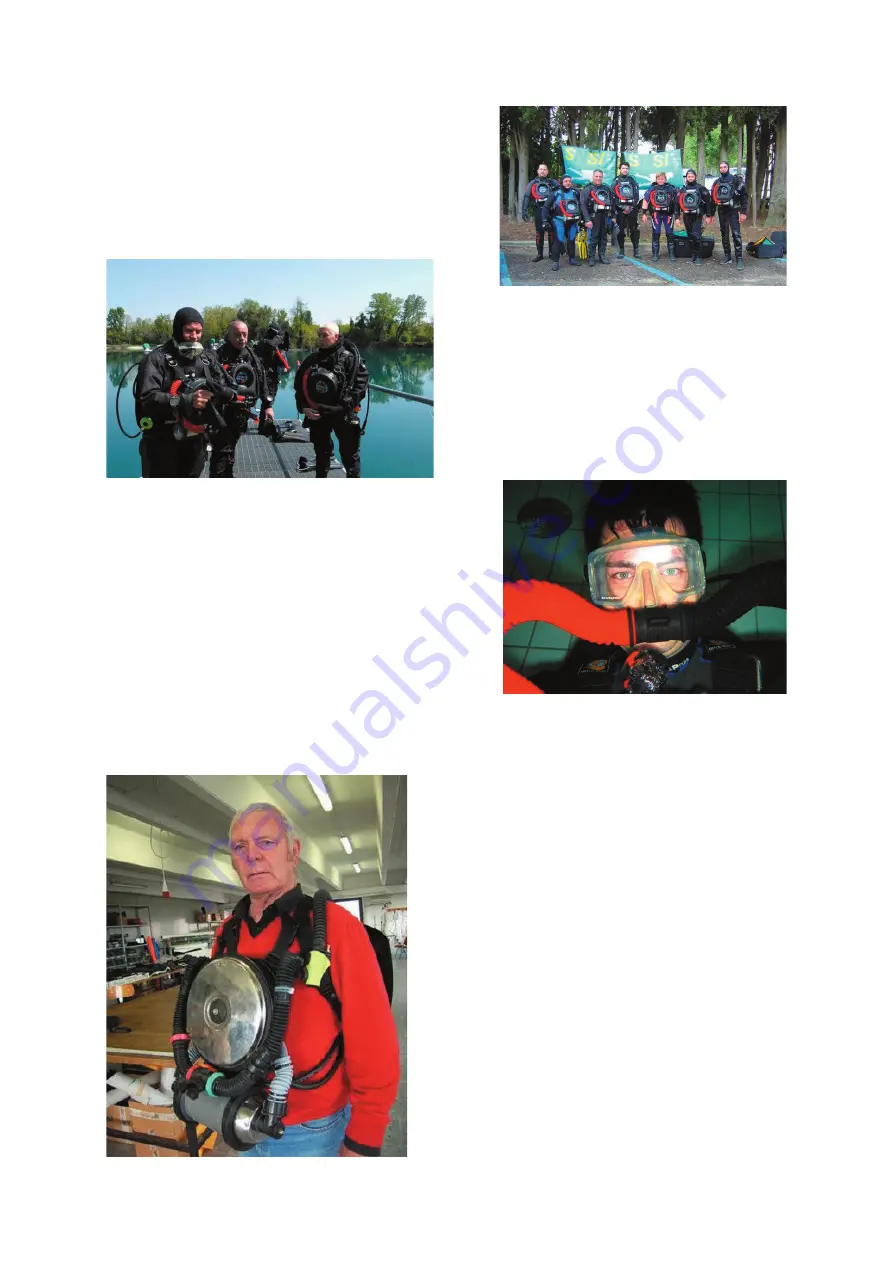
Recreational underwater diving represents a manner
of aggregation and, once in water, deserves great
emotions but, to live such intense moments, the
diver has to face up not little uneasiness, but being
able to remove two of the main negative factors,
diving could reserve very unforgettable moments.
A simple analysis put into evidence that
by drastically reducing weight and overall
dimensions of tanks and, during the dive,
drastically removing or reducing the typical
bubble noise of underwater breathing on
open circuit, we would be able to enjoy the
dive and appreciate the
environment without
inconvenience.
Thanks to underwater breathing apparatus with
partial recycling of exhaled gas (SCR) semiclosed
circuit
T.I.R./SPACE 40
(
T
ecnology
I
nnovation
R
ebreathing) we have reached the target; for instance,
with a tank of only 4,5 lt./0.16 cu. ft. weighting
about 5 kg./11 pounds, it is possible to make a dive
of more than 60 minuts at a depth of 30 mt./100 ft.,
even keeping 50 bars on the tank for unexpected
events; the logic consequence is a reduction of
bubbles (more then 90%) compared to a traditional
open circuit. In short, if at depth of 30 mt./100 ft. while using an open circuit about 80 lt./2.83
cu.ft. are exhaled every minute, with our underwater breathing apparatus these are reduced to
about 8 lt./0.28 cu.ft every minute; this way the
underwater environment is not affected by the
“intrusions” and so it is not “frightened”, certainly
a goal that could be considered fantastic.
With that in mind it is appropriate to know into
details the genesis of our underwater breathing
apparatus with partial recycling of exhaled gas,
which was wanted, planned and developed by
Claudio Beux, a professional diver who dived for
more than thirty years, usually down to more than
100 mt./334 ft.; being in difficulty due to very
heavy open circuit equipmets and even more with
semiclosed (SCR) or close (CCR) circuit breathing
apparatuses available, he had to invent for himself
a lighter underwater breathing apparatus that
could help a less tiring respiration, allowing him
to dive deeper than 100 mt./334 ft. without getting
breathless while swimming against sea current.



































